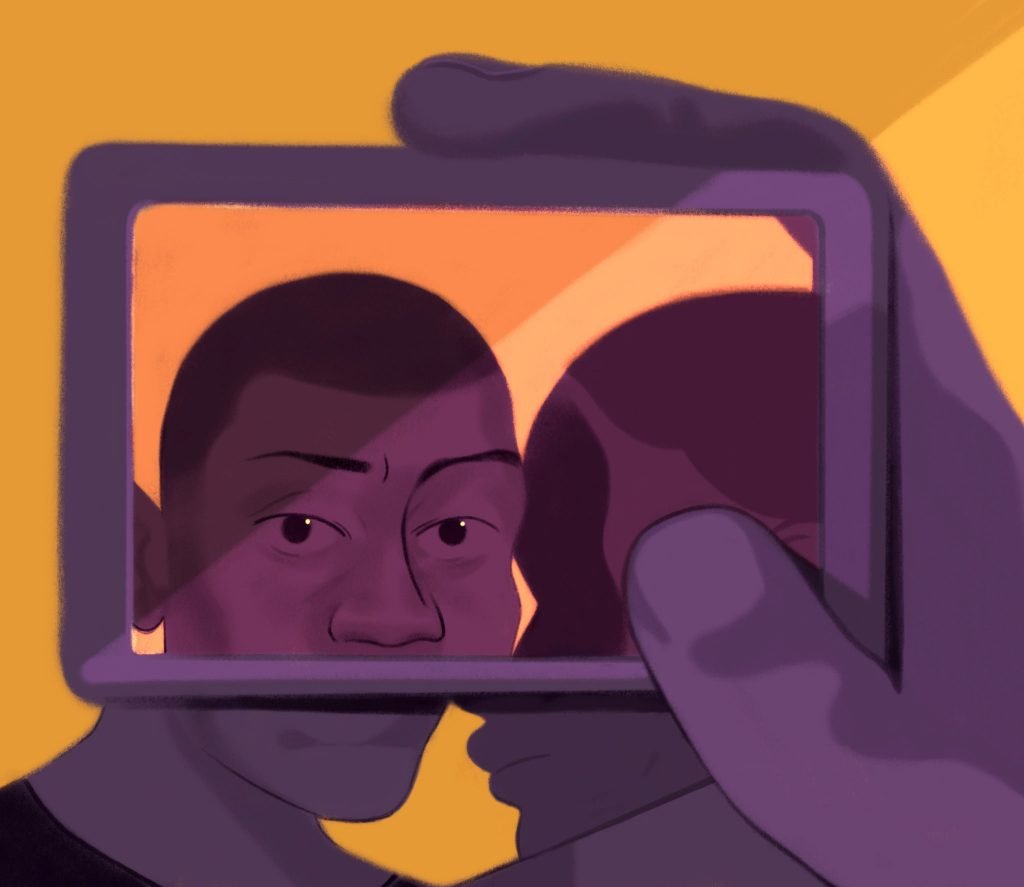‘I grew suicidal.’
‘It completely destroyed my outlook about how the future could be.’
‘Everyone who could help me, I had distanced myself from them.’
These are only a handful of these statements made by two anonymous victims of image-based sexual abuse, often problematically called as ‘revenge porn’, featured in an Indian media company, ScoopWhoop’s 2017 video titled, ‘The Story of Revenge Porn’. Revenge porn, according to the video, is “an act of revealing or distribution of sexually explicit images or videos of a partner without consent; usually by a former partner in order to cause them distress or embarrassment.” Stemming directly from women’s objectification, this highly gendered cyber crime deploys women’s own bodies against them. It is premised on making the woman’s body accessible for public consumption (in particular, the male gaze) as an act of power.
In today’s age, the stakes of dealing with such image-based sexual abuse have been surmounting in terms of consequence. For example, American politician Katie Hill resigned from Congress after her ex-husband weaponized intimate photos of her and a staffer, which prompted an ethics inquiry. While image-based sexual abuse is not explicitly considered a crime in India, the phenomenon is on the rise as more people get access to mobile phones and the internet. Numerous countries have now added specific legislation to tackle image-based sexual abuse. In India especially, access to justice for the victim can be a very difficult terrain to navigate. Women’s right to their own bodies is re-interrogated in the culture of fear and shame around such incidents.
Stemming directly from women’s objectification, this highly gendered cyber crime deploys women’s own bodies against them. It is premised on making the woman’s body accessible for public consumption (in particular, the male gaze) as an act of power.
Nomenclature and Scope
In the absence of a specific legal definition in the Indian context, Debarati Haldar and Jaishankar Karuppannan came up with a definition. In Cyber Crime and the Victimization of Women, they maintain that, “…revenge porn has been used regarding cyber victimization mostly to indicate victimization of adult women in the hands of their dating partners or cyber acquaintances”. Researcher Sophie Maddocks highlights that experts believe that ‘revenge porn’ is “a victim blaming term that risks misdirecting government policy and misinforming the public.” Her work also points to the gendered aspect of the crime.
Because of this, they are “used as a tool of control”, not too different from the stories of the two women in the ScoopWhoop video. In addition, the use of the word porn “conflates private visual material with public content meant for mass consumption.” Feminist scholars have proposed the term ‘image-based sexual abuse’ as a replacement. Its value lies in its typification as a form of sexual abuse, both “to reflect women’s experiences and to resist the minimisation of these forms of harm”. As these scholars show, image-based sexual abuse and its proliferation is made possible by a nexus of technology, crime and misogynistic culture.
Image-Based Sexual Abuse or ‘Revenge Porn’ in India
As body and sex positivity have become more mainstream, sharing explicit photos has become a common practice among the millennial population today, especially with the prevalence of apps like Snapchat, even more so in current times where couples can’t meet each other. Such apps allow users to send timed and self-destructing clips and videos. If a screenshot is taken, the sender is notified. However, as one of the women in the ScoopWhoop video points out, bypassing these is quite easy. A survey by the Cyber and Law Foundation found that 27% of Internet users between the ages of 13 and 45 had dealt with incidents of image-based sexual abuse.

Yet, the first revenge porn conviction in India was delivered as recently as 2018.
A 23-year-old in West Bengal was charged with five years imprisonment and a fine for circulating explicit images of his 20-year-old ex-girlfriend. In a statement to India Today, the public prosecutor for the West Bengal CID said, “What she has suffered is digital rape.” His choice of language and words are in line with experts’ views of this being another form of sexual abuse. He added that, “…several of the video clips were still on porn sites”, highlighting an important aspect of the crime that remains unchecked by current legislation. The internet allows criminals to prolong the duration of the crime, perpetuating the objectification of the victim’s body. It is notoriously difficult to detect and curb its spread on messaging platforms. Imparting accountability to service providers with respect to the removal of such content also remains absent in the Indian context in lieu of a robust legal framework around image-based sexual abuse cases.
A 23-year-old in West Bengal was charged with five years imprisonment and a fine for circulating explicit images of his 20-year-old ex-girlfriend. In a statement to India Today, the public prosecutor for the West Bengal CID said, “What she has suffered is digital rape.” His choice of language and words are in line with experts’ views of this being another form of sexual abuse. He added that, “…several of the video clips were still on porn sites”, highlighting an important aspect of the crime that remains unchecked by current legislation. The internet allows criminals to prolong the duration of the crime, perpetuating the objectification of the victim’s body.
Also read: Image-Based Sexual Abuse, Or Revenge Porn As Depicted In Films
Hesitation To Report & Culture of Shame
Legal recourse is not an option for everyone. As revealed by the first woman in the video, the perpetrator was a family friend and did not have any formal action taken against him. This signals a culture of silence, passivity, and normalisation that is deeply troubling. She described the trauma of having to see him at multiple family gatherings. Even her parents did not deem it appropriate to approach authorities, highlighting how women’s bodies are still viewed as the custodian of the family honour.
Women also fear that involving the police will police their bodily autonomy by blaming them for having made the pictures accessible to the perpetrator in the first place. One of the women did not tell her parents for fear of curbs on her own rights: “Even if I told my parents about this, maybe they would have taken some action, but the actions that would have been taken against me would have been more severe. Maybe I would have had to stop going to college, my phone would be confiscated, I wouldn’t have been allowed to go out or talk to anyone anymore.”
In response to the rising cases of image-based sexual abuse, social media sites like Facebook have now enlisted machine learning and artificial intelligence to flag such content. Search engines like Google have also removed ‘revenge porn’ sites from their search results. However, this does not stop such videos from emerging onto traditional porn sites like xvideos.com.
Remarkably, even at the cost of getting some kind of retribution, this woman felt it more important to secure her personal autonomy as she anticipated the kind of reaction she would get even from her very own family. Such negotiations are emblematic of a deep crisis in society. This kind of hush-hush culture created around such incidents prevents victims from speaking up further.
For the victims who do muster the courage to file a complaint, harassment is likely, as there are no guidelines or sensitivity training offered to police officers when handling such cases. Victims can ask someone to submit the evidence on their behalf or “produce the evidence in a sealed package.” It is not difficult to imagine the privacy concerns that arise with giving evidence to a male police officer. She can only request to submit it to a female counterpart. The decision of the women in the video to not approach authorities is indeed founded in reason.

The law enforcement system is also responsible for contributing to the kind of victim-blaming culture that prevents more women from speaking out in such cases. In a statement to Homegrown Magazine, an image-based sexual abuse victim was harassed even more by a female officer “constantly asking her why she was even in a relationship” insisting that “it was against ‘[Indian] culture.’” As a result, the woman left without filing her complaint.
‘Revenge Porn’ and the Internet
In response to the rising cases of image-based sexual abuse, social media sites like Facebook have now enlisted machine learning and artificial intelligence to flag such content. Search engines like Google have also removed ‘revenge porn’ sites from their search results. However, this does not stop such videos from emerging onto traditional porn sites like xvideos.com.
While compiling research for this piece, the second page of Google search results for “revenge porn in India” had links to porn sites with pages that featured the category of ‘revenge porn’. There were over 2,30,0000 results listed for those search terms alone. Websites specifically for uploading such content exist. The male gaze has created a demand for such content. However, in the absence of strict legislative frameworks, internet service providers will not be incentivised to curb the spread of such content, where every second of airtime can mean hundreds upon thousands of shares and saves.
Ultimately, victims of image-based sexual abuse are in a double bind. First, they are vilified for being sexual beings. On top of this, they are slut-shamed and victim-blamed once after approaching higher authorities. The woman’s body is thus re-inscribed as the source of chaos and policed even in its own victimization. To add to this, they are blackmailed in the process by their perpetrators, who ‘punish’ them for merely exercising their choice to not continue sexting, exchanging pictures or ending these toxic relationships, as evident from the testimonies in the ScoopWhoop video. This is not to mention the extreme emotional and mental trauma that they undergo in the process.
Also read: Here’s Why It Is Image-Based Sexual Abuse And Not Revenge Porn
To combat the menace of image-based sexual abuse, we must start with a re-evaluation of the terminology ‘revenge porn’ used in popular parlance. Dealing with this crime requires specific and robust legal frameworks with stringent punishments that incorporate the victim’s well-being. Acts like that of image-based sexual abuse thrive in cultures of misogyny, shame, sexual commodification and toxic masculinity. Curbing these crimes also necessitates self-reflection on the part of society, and the dismantling of patriarchal structures.
Nishtha Jaiswal is a postgraduate student of Media and Cultural Studies at the Tata Institute of Social Sciences, Mumbai. You can find her on Instagram and Twitter.
Featured Image Source: Feminism In India




